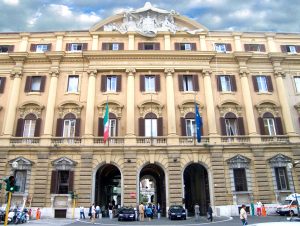INTERLINK aims at exploiting the potential of ICT to promote innovative governance models based on the partnership between citizens, private actors and public administrations. In particular, a digital platform will encourage collaboration among public and private actors and will stimulate the co-production and co-delivery of public services and their adoption and reuse by other Public Administration and private actors.
Following a short interview with Fondazione Bruno Kessler about shadows and lights in co-producing public services with ICTs. Fondazione Bruno Kessler is a top research institute in Italy, and the scientific and technical coordinator of INTERLINK. In particular, the project will exploit Team i-3 Intelligent Interfaces and Interaction scientific background and technical competencies in service-oriented architecture and user-centered design to develop interlinkers for the co-production of public services.
What is the potential and what are the barriers of ICT in co-producing and co-delivering public services?
ICTs have the potential to reshape existing models to deliver public services and can encourage the co-production of more ethical, sustainable and inclusive services in different ways. ICT might provide guidance to PAs on new collaborative models for service delivery, facilitating sharing and re-use of knowledge, software and services and establishing connections that were not possible before by overcoming problems of geographical dispersion and by creating a marketplace of enablers. But also through ICT, citizens can take an active role in shaping how public services should be delivered according to their own perspectives and needs. However, several barriers still prevent PAs, companies and citizens from fully exploiting the potential of ICT. Among these, the shortage of finance, the lack of a skilled workforce and the complexity of legal regulations are barriers to a government’s promotion of ICT-enabled co-production. Considering citizens, cultural factors such as privacy-related issues and lack of trust in the government tend to reduce their participation.
In INTERLINK, a digital platform to guide step-by-step the co-production and co-delivery of public services is currently being designed, together with a set of open-source reusable resources that will concretely aid the planning and implementation of services. The platform will provide a collaborative environment where the different actors will work together and find the knowledge and tools needed to carry out a joint effort toward the co-delivery of services.
How should ICT solutions be designed in order to really support Public Administrations and citizens in co-delivering better services?
The adoption of a new technology strongly depends on the quality of the solution developed and its usefulness. Usability is a crucial factor but other elements should be considered: perceived usefulness, price, security, interoperability and robustness are all factors affecting user acceptance and, consequently, adoption of new technology. Moreover, different users will weigh criteria differently and might have different needs that are related to the final acceptability, and hence adoption, of a digital solution.
That’s why user-centricity is at the core of INTERLINK: Public Administrations, citizens and private companies are active partners that are helping us in defining the features of the INTERLINK platform and the nature of the reusable components, a set of open-source Building Blocks that will offer basic capabilities to facilitate the co-production of digital public services. We are exploiting a co-design approach that roots the development of innovative technologies into local communities and existing networks of citizens and stakeholders, considering the specificities of the different target groups as a measure to guarantee accessibility and long-term adoption.
In the first months of the project, three Public Administrations have been involved in the definition of the requirements for the design of the platform and the identification of the most relevant reusable resources to support co-production and co-delivery of public services. Service design methods such as personas and scenarios have been used to elicit specific requirements coming from the different stakeholders involved.
The INTERLINK platform will be deployed and tested in three Public Administrations across Europe but other Public Administrations are involved. Can you tell us how you are working with PAs?
Besides the three Public administrations who are active partners in the INTERLINK consortium, we are extending the participation to other stakeholders to assess our first concepts and requirements and elicit additional needs. A workshop has been recently organized, for instance, with the Italian Municipality of Reggio Emilia, where the local authority, businesses and citizens already work together on issues relating to social innovation, welfare and digital transformation. Their Smart City Protocol represents the context within which the Municipality defines and pursues strategic guidelines for the development of the territory through digital and social innovation. They follow a governance approach that promotes stakeholder involvement to ensure that governance is participatory and that everyone contributes with their own ideas, skills and solutions. Their experience in co-producing public services has been analyzed to elicit the organizational model behind these joint initiatives, the different phases of the collaborative process, the challenges and barriers and, finally, the specific needs of the PA that might be intercepted by the INTERLIKER digital platform.





